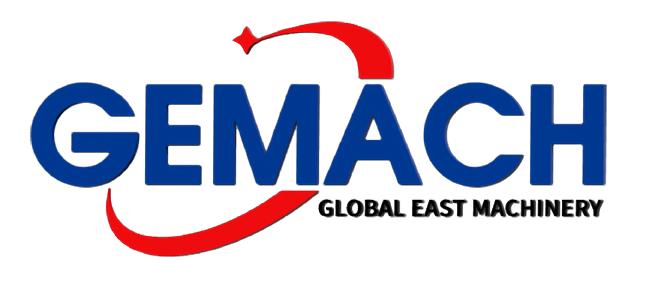The structural characteristics and safe use of the disc harrow
Release time:
2024-07-16
The disc harrow is a tillage and land preparation machine that can work on both tilled and untilled land, with strong adaptability. It introduces the structural characteristics of the disc harrow, emphasizes the safety precautions for using the disc frame, raises people's safety awareness, and reduces the occurrence of human injury accidents. Now, let's learn about the structural characteristics and safe use of the disc harrow!
The disc harrow is a tillage and land preparation machine that can work on both tilled and untilled land, with strong adaptability. It introduces the structural characteristics of the disc harrow, emphasizes safety precautions for the disc frame, raises people's safety awareness, and reduces the occurrence of human injury accidents. Now, let's learn about the structural characteristics and safe use of the disc harrow!
1. Structural Characteristics of the Disc Harrow
The disc harrow generally consists of parts such as the harrow group, discs, angle adjustment mechanism, and coupling device. The harrow group is composed of discs, spacers, square shafts, bearings, and scrapers. There is a square hole in the center of each disc that passes through above the square shaft. During operation, the discs rotate together with the square shaft; both ends of the square shaft are tightened with nuts to integrate the harrow group with it. The bearings connect to the harrow frame while spacers separate adjacent discs along their axis. A lever can be used to hang any cut on the tooth plate onto a support frame; through a series of link mechanisms, it allows for swinging around a hinge point to achieve different angles.
When working with a tooth plate, under traction force, the discs roll forward while cutting into the soil at a certain depth due to gravity and soil reaction forces acting on them. The combined motion of the tooth plate can be decomposed into pure rolling and non-rotational translational motion; thus, any point on it traces a helical path.
2. Safe Use Techniques for Disc Harrows
2.1 Quality Safety Requirements for Disc Harrows
1) The structure of machinery should be reasonable; following operating instructions must ensure no danger during operation and maintenance. Safety requirements must comply with national standards. Dangerous areas should have fixed safety signs that meet national standards. Components operated by hand should have smooth surfaces without burrs or sharp edges.
2) For suspended or semi-suspended harrows near suspension brackets: "Caution! Keep away from machinery" safety signs should be placed when folding up for transport; locking mechanisms must be secured during transport along with safety signs stating "Lock folded harrows during transport" and "Caution! Keep away from machinery."
3) Traction harrows should have safety pins or other devices that automatically disengage under excessive force conditions installed. Pin-type fasteners must use specified materials and specifications; substitutes are not allowed.
4) The lifting mechanism of disc harrows should be safe and effective with flexible operation and stable movement. Hydraulic hoses, piping, and accessories should be reasonably placed and protected to avoid liquid splashing onto operators in working positions in case of rupture.
5) Transport gaps for disc harrows: Traction harrows not less than 150 mm; suspended or semi-suspended harrows not less than 200 mm; there are no restrictions on transport gaps for small tractors below 18 kW assisting disc harrows.
6) Operating manuals should record safety operating precautions as well as maintenance-related safety content in compliance with relevant national standards. If safety signs are posted on machinery tools, this must be indicated in manuals along with their locations on said tools. For safety signs depicting hazardous graphics, their meanings must be explained.
2.2 Safety Precautions for Using Disc Harrows
1) Before use, check all fastening bolts and nuts for looseness; especially ensure that square shaft nuts are tightened securely at both ends to prevent loosening of discs which could cause damage to them.
2) Lifting or lowering suspended harrows must be done slowly and smoothly without forcing operations or using body weight to press down on them against soil surfaces while moving through fields or over ridges.
3) During work operations, repairing or adjusting teeth is strictly prohibited while using tractor-mounted implements; sudden turns are not allowed when operating tractor-mounted implements; backward movement is prohibited unless lifting implements first before turning or reversing.
4)牵引杆安全销只允许用低碳钢材加工更换,不得用其他材料替代或随意改变尺寸。 不得用石头、铁器等硬物对耙子的加重箱加重。 加重箱和耙子请严禁搭乘人员。
5)出现严重雍土或曳山现象时,应分析原因,排除原因,不得强制作业。 将耙子靠近地面作业时,耙子请勿触摸田埂或石坎等。 停车后悬挂器具接地,不允许经常悬挂状态停车。
6)转载分区或短途运输时,必须将耙齿工作机构提升至最高位置并锁定,农具处于运输位置,并系好挡链。 运输中,耙子上不得载人,不得放置重物。 禁止高速行驶和急转弯。 长途运输,必须用耙、机或整辆装甲车运输,不准带耙自行运输。
Related News
How is a deep loosening machine maintained?
2024-09-18
Introduction to rotary tillers
2024-06-12
Contact Phone:86-13465191540
whatsapp:+86-13465191540
E-mail:Sophia@Gemach-sd.com
Address: Building G, Dingliang Industrial Park, Qihe County, Dezhou City, Shandong Province
Scan the two-dimensional code





